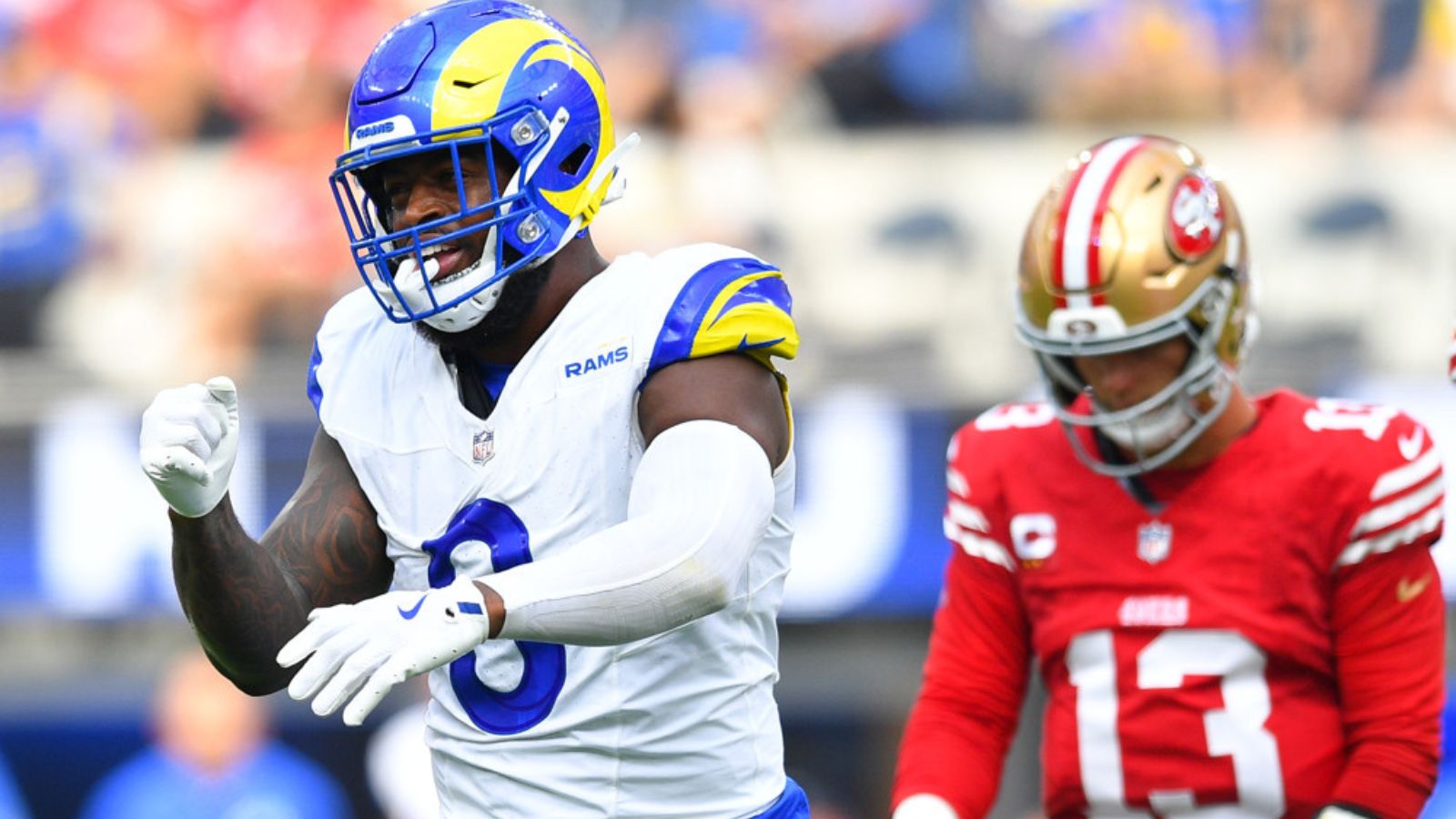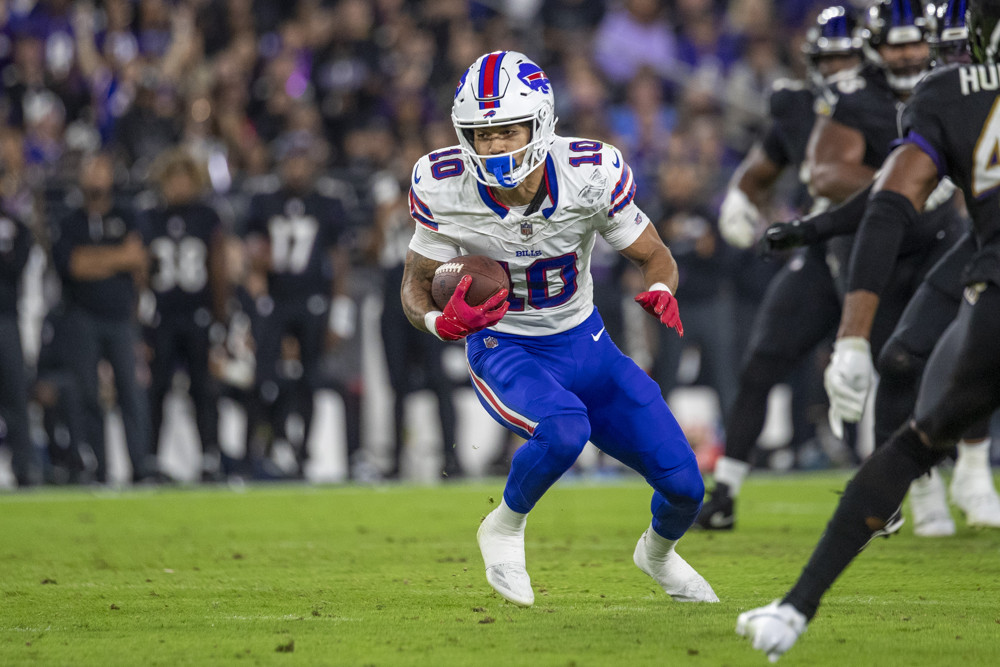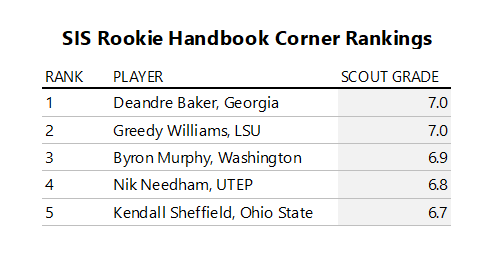Photo: John Rivera/Icon Sportswire
If he were alive today, Nobel Prize-winning psychologist Daniel Kahneman may have gotten a kick out of what Brian Flores is doing to quarterbacks on a weekly basis.
His Vikings are bringing the house on every play. Blitz after blitz after blitz, or so it seems. This constant pressure, or the threat of a free rusher on every snap, activates the part of our brain that Kahneman called “System 1.”
System 1 is responsible for our thoughts that are fast, automatic, and emotional.
On the football field, the constant threat of a Vikings’ blitz is making offenses think fast, not slow and all but ensures mistakes will follow.
Through their first seven games, Vikings’ opponents have committed more than three dozen offensive penalties. In Week 3 against the Texans, three separate offensive linemen were flagged for false starts on consecutive plays.
That type of pressure must be getting to teams early. Worming its way through their psyche in the days before they have to face the Vikings.
Offenses have to spend the necessary time to think through their gameplan, slowly and carefully, to try and come up with answers to slow this unit down.
That type of effortful thinking takes place in “System 2.” Kahneman described it as when the brain kicks into high gear and you’re able to hyperfocus on the task at hand.
A color commentator might say it’s when the game starts to slow down for a young player. You may have also heard it described as “entering a state of flow.”
Brian Flores isn’t reading all that. His defense is doing everything in its power to speed things up and shift opponents’ into System 1 so they’re prone to negative plays.
What’s really crazy about his defense, though, is how they’ve been able to create roughly the same amount of pressure regardless of whether or not they bring the blitz.
| YOY Sample | Pass Rushers
|
Pressure% | NFL Rank |
| 2023 Season | 5 or More | 39% | 25 |
| Weeks 1-8
2024 Season |
4 or Fewer
5 or More |
26%
34% |
29
27 |
| Weeks 1-8 | 4 or Fewer | 35% | 6 |
It’s not that Brian Flores has changed his blitz-happy ways. Not in the slightest. His defense is among the most aggressive in the league and has sent five or more pass rushers on 40% of dropbacks.
But that’s a far cry from the 52% blitz rate he unleashed on quarterbacks by this time last season. So what exactly has changed?
Even though Flores has slashed his rates, the Vikings have kept offenses on their toes by crowding the line of scrimmage and “simulating pressure” with a roving cast of characters.
His defense is able to line up in disguised formations before the snap that present one coverage before morphing into another. Here’s how that can look.
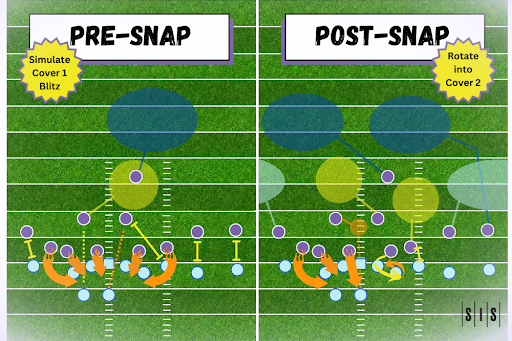
A simulated pressure is a 4-man rush with a player dropping into coverage from an alignment that typically rushes, and a player rushing the passer from an alignment that typically drops into coverage.
Ted Nguyen of The Athletic has talked about “simulated pressures” and their rising popularity with defensive coordinators around the league.
Nguyen explained simulated pressure as when there are multiple defenders on the line of scrimmage showing blitz but the defense only ends up rushing four and dropping seven into coverage. With these sim pressures “one of your rushers is going to come from the second or third level and you drop a defensive end,” he added.
In the play below, safety Harrison Smith rushes from the second level as Patrick Jones II drops into coverage.
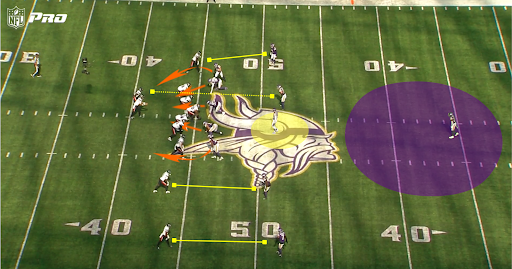
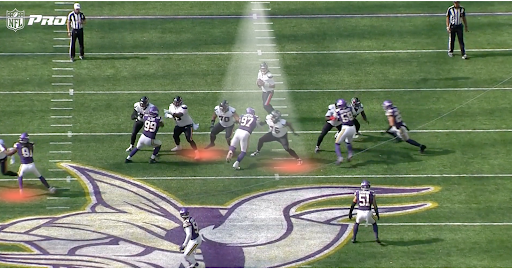
Jerry Tillery (#99) occupied three offensive linemen. He shoved the right guard and tackle before circling back to engage the center.
On the right, Harrison Smith (#22) and Jonathan Greenard (#58) collided with the running back and left tackle and used their impact to switch assignments.
The quarterback was able to spin away from Phillips but turned his back to the defense as they shifted into zone coverage.
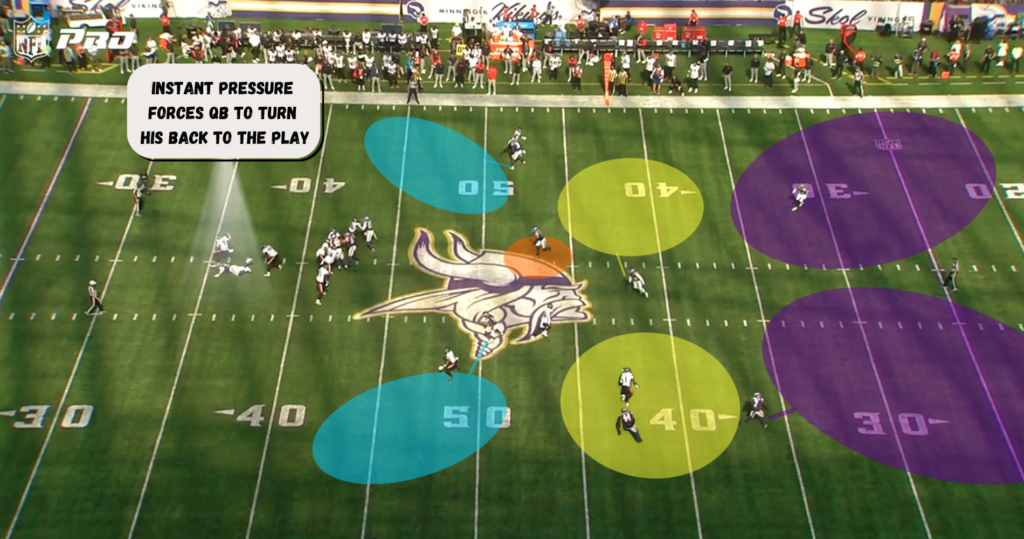
The Vikings’ switch got them into a favorable matchup with their defensive end (6’3”, 259 lbs.) on a running back (5’6”, 185 lbs.) and the fight was over in a flash.
The Vikings collected their fourth sack on the day and their third on second down.
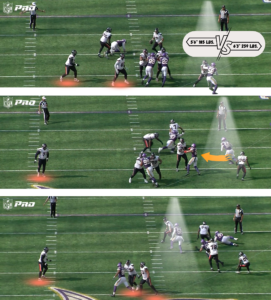
Second down, in particular, had been the money down for the Vikings during their undefeated 5-0 start. They ranked second in the league in pressure rate (42%) when sending four or fewer pass rushers.
In their losses to the Lions and Rams, that pressure rate dropped to 33%.
To better understand the Vikings’ success and what may have caused this downturn, I watched all their second-down blitzes and pressures so far this season.
Typically, the Vikings have their cornerbacks drop into coverage while their defensive tackles and/or defensive ends rush the passer on second down.
| Cornerback | Pass Snaps | Rush% | |
| Byron Murphy Jr. | 292 | 1% | |
| Stephon Gilmore | 272 | 0% | |
| Shaquill Griffin | 193 | 0% | |
| Defensive Tackle | Pass Snaps | Rush% | |
| Harrison Phillips | 169 | 100% | |
| Jonathan Bullard | 133 | 100% | |
| Jerry Tillery | 119 | 99% | |
| Defensive End | Pass Snaps | Rush% | |
| Jonathan Greenard | 246 | 93% |
At safety, the Vikings like to roll with a trio of Camryn Bynum, Harrison Smith, and Josh Metellus. Bynum drops into coverage; Smith rushes the passer once in a blue moon; and Metellus gets after it about once every five plays.
On second down, Flores typically plays two or three defensive tackles alongside DE Jonathan Greenard; the safety trio and two cornerbacks; and his green-dot linebacker.
With most of the spots already filled, the remaining void is divvied up between a deep bench of linebackers who cause chaos and confusion by any means necessary.
To keep opponents guessing, the Vikings have shown more than 20 different linebacker pairings on these second-down pressure and blitz packages.
| Linebacker | Pass Snaps | Rush% | Sack% | Pressure% |
| Andrew Van Ginkel | 98 | 59% | 5% | 12% |
| Blake Cashman | 85 | 26% | 5% | 24% |
| Patrick Jones II | 59 | 78% | 4% | 4% |
| Ivan Pace Jr. | 56 | 29% | 6% | 24% |
| Kamu Grugier-Hill | 34 | 24% | 0% | 13% |
| Jihad Ward | 27 | 100% | 0% | 7% |
| Dallas Turner | 18 | 56% | 0% | 0% |
Making matters worse is the Vikings’ complete rejection of typical “three-level” defensive structure. Linebackers shift and prowl and blur the lines between levels as safeties creep up and mug the gaps.
Through the first five weeks of the season, it seemed as though anyone could rush the passer on second down. But things have changed since Blake Cashman picked up an injury in London and has been out of the lineup.
Against the Lions and Rams, the Vikings’ weaknesses were exposed. Instead of reacting to their simulated pressures, Jared Goff and Matthew Stafford stood in the pocket and calmly executed the offense.
When the pressure did come, they were decisive and got the ball out quickly or side-stepped the rush to take downfield shots.
Both knew the pass rush was inevitable and they were going to get hit. Sometimes, that’s just the cost of doing business.
When teams are able to withstand the threat of every down pressure—both real and imagined—they can take advantage of a defense frequently out of position.
The Lions and Rams have left a light on for teams looking to face their fears and beat this Vikings defense. Just remember, for sixty minutes, the bogeyman doesn’t exist.

